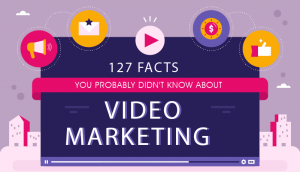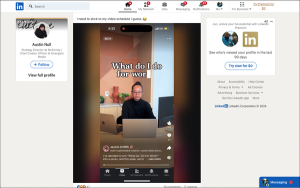
If you aren’t optimizing your paid advertising efforts to improve their performance, you aren’t making the best use of your marketing spend.
Marketing and advertising aren’t new or novel practices in the world of business. In fact, they pre-date the industrial revolution. Archaeological evidence reveals that advertisements were carved into the walls of buildings & tombs, as well as on papyrus. It is fascinating to see how advertising has evolved over time; an evolution that brought to life newspaper ads, billboards, events, TV ads and more. The most widespread challenge with these methods was that there was no way of telling if one was more effective than the other, and all of them required bigger budgets to really create an impact.
The late 1900s and 2000s provided some answers to these questions when the virtual world began to boom, with over 5 million homes connected via the internet. Digital marketing started to secure its place in the marketing mix and improved marketing teams’ ability to leverage KPIs like impressions, reach, traffic and more. While these stats provided some answers, they also created an appetite for a more data-driven approach.
This fundamental need to do better gave rise to performance marketing as a methodology. Teams were not only able to measure the number of sales opportunities they created for the business, but they were also able to attribute them to revenue generated. Its significance in paid advertising is obvious. But as technology, customer expectations, and market dynamics evolved, so did performance marketing.
In the current market scenario, with ever-shrinking budgets, these five tactics will help you tailor your advertising approach strategically to ensure it impacts the bottom line.
Tactic 1: Align ad strategy with buyer’s journey
A successful ad campaign is designed to promote engagement and guide them toward a conversion action. This requires them to not only identify your solution as a good fit but also trust your brand as a reliable source of information. That means they need to engage with you long before deciding to engage you.
For your campaign to be successful, you will need to understand what your audience needs at the different stages and what information you can provide to meet those needs. However, depending on your industry, your buyers’ journey will vary. The key is understanding why the same buyer might have different expectations from different service providers and creating an ad strategy that meets those expectations.
Tactic 2: Launch multi-channel campaigns
The reality of today’s world is that it is hyper-connected. This hyper-connectivity significantly impacts the buyer’s journey, adding complexity to the customer’s expectations for the experience you provide.
To be able to follow them along their journey, a multi-channel ad campaign that covers all the digital channels your buyers use is crucial.
Tactic 3: Leverage multiple media formats
Ensuring that you’re present at the channels, at the right stage of the buyers’ journey, are two corners of a well-built pyramid. But they are incomplete without content in an engaging and informative format. The format will vary depending on the industry you operate in, the depth of information needed, and the emotional and financial investment. But leveraging multiple media formats is essential to complete the pyramid with a strong foundation built to withstand the test of time.
Tactic 4: Track and empower real-time adjustments
Tracking CPM, clicks, CPC, and conversions is common practice, but what impact do they have on the bottom line? To make effective real-time adjustments, you must be able to qualify the data in terms of the bigger picture: revenue. While machine learning and bidding algorithms handle the adjustments for us, they must be provided with the right information to do so effectively. Having determiners like average sale price or customer lifetime value in place helps with this. If you’re curious about how to identify the right set of determiners for your organization, we’ve covered it in our blog: 3 Must-Know Determiners to Boost Performance Marketing.
Tactic 5: Stay on top of technology & feature advances
Every advertising platform aims to stand out, creating features that are uniquely able to meet organizations’ needs. However, the commonality between them is that they all consistently endeavour to improve said features or launch new ones to address more current needs.
For example, Google recently launched Custom Conversion Values, allowing organizations to take their determiners and apply them within the platform to enable advanced analytics. They’ve also made a new Customer Acquisition Goal available, allowing businesses to set advanced goals like growing their revenue or market share by acquiring new customers only. At the same time, Microsoft has enabled an advancement that allows organizations to reach relevant audiences with LinkedIn Profile Targeting.
Staying on top of these trends will allow you to keep pushing the envelope on enabling optimizations that improve results.
Parting Words
These five tactics empower organizations to take a strategic and data-driven approach to improve the performance of their search engine marketing and other paid advertising efforts. The reality is that in today’s world, a strategic approach is non-negotiable. The sooner you build a culture that promotes the test-and-learn mindset with an operations approach that rewards it, the better prepared you will be to grow and evolve with your customers.
The post 5 Paid Advertising Tactics to Improve Performance Marketing appeared first on Search Engine People Blog.
(10)
Report Post







